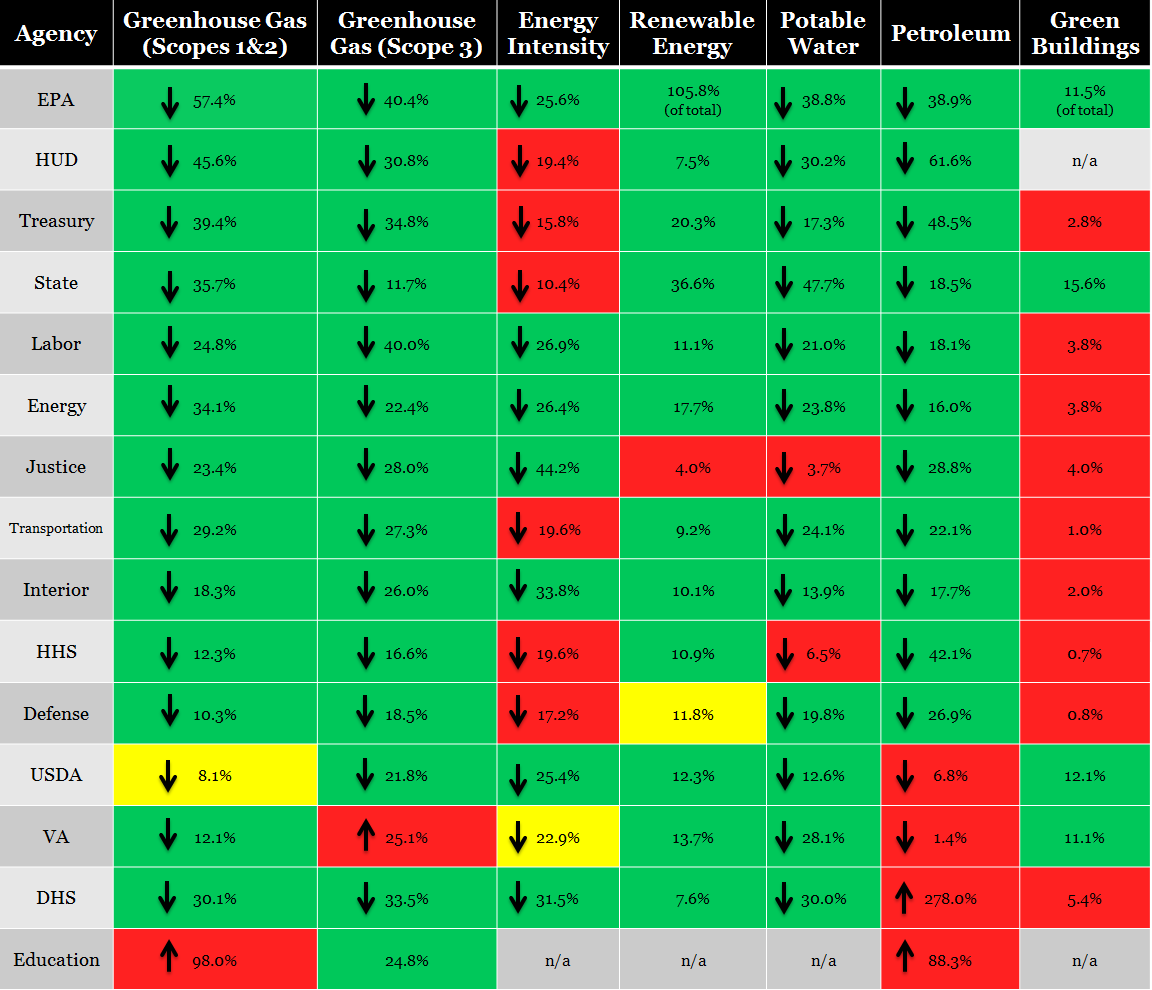
Interior Secretary Sally Jewell tours one of the most energy efficient office buildings in the country -- the Edith Green-Wendell Wyatt Federal Building in Portland. Interior Department
The Most and Least Sustainable Agencies in Government
One chart shows which agencies are going green.
From hiring practices to foreign policy, President Obama repeatedly has said the U.S. government must lead by example.
If any issue is the poster child for this mantra, it’s the environment. One of Obama’s earliest executive orders raised the bar for agencies to cut the amount of greenhouse gases they produce and adopt technologies and materials to make federal buildings greener.
The Office of Management and Budget has since partnered with the Council on Environmental Quality to spell out specific metrics to measure agencies’ progress in meeting White House goals. Using performance.gov , OMB has posted annual updates that track agencies’ successes and failures.
To receive a “green” score, agencies had to meet the following standards, established by OMB and CEQ:
- Greenhouse Gas Scopes 1 and 2 : This includes gases emitted from sources owned or controlled by a federal agency, as well as those resulting from purchased electricity, heat or steam. Green agencies cut the greenhouse gases in scopes 1 and 2 by the goals they set in 2013.
- Greenhouse Gas Scope 3 : Greenhouse gas emissions not directly controlled by an agency, but related to its activities, such as employee commuting and contracted wastewater treatment. A green score for scope 3 also reflected an agency that met its own goal. For more details on the scopes, read this .
- Energy Intensity : A measure of energy efficiency. Green agencies reduced their facilities’ energy intensity scores by at least 24 percent since 2003 and are on track for a 30 percent reduction by 2015.
- Renewable Energy : Green agencies used at least 7.5 percent of renewable energy sources.
- Potable Water : Agencies reduced their use of drinking water by at least 12 percent from a 2007 baseline and are on track for a 26 percent reduction by 2020.
- Fleet Petroleum Use : Green agencies cut petroleum use by 16 percent since 2005 and are on track for a 20 percent reduction by 2015.
- Green Buildings : Agencies received a green score if they make a certain percent of their new, existing and leased buildings green, as measured by a variety of standards. This was by far the hardest measure for agencies to reach.
Taken as a composite score, measuring not just if the agencies met OMB’s goals but the degree to which they surpassed the targets, here are the top five most sustainable cabinet-level agencies.
- Housing and Urban Development
- Treasury
- State
- Labor
- Energy
Here are the bottom five, in order of least sustainable cabinet-level agency:
- Education
- Homeland Security
- Veterans Affairs
- Agriculture
- Defense
This chart shows how each agency is doing in each category and whether it has exceeded OMB’s goals (green), just barely met them (yellow) or failed to reach them (red). Note the Environmental Protection Agency was not included in the previous rankings, as it is not a cabinet-level agency.








